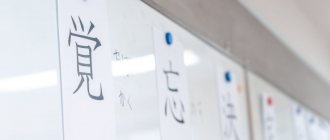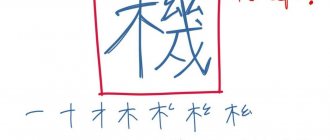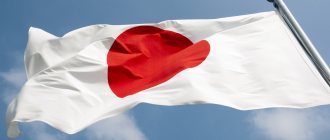If you lack motivation to lead a healthy lifestyle, and your enthusiasm disappears after just a couple of workouts, the Kaizen method can help. It is the art of taking small steps to achieve goals in all areas of life. The Japanese are confident that even five minutes of productivity every day will help achieve excellence.
7 signs that indicate it's time to exercise
general information
What is Kaizen? This is a Japanese philosophy aimed at normalizing, taking production to a new level. People first started talking about it in the period after World War II. At that time, several large Japanese companies were looking for a way to recover from the military turmoil they had experienced.
The Kaizen system was created by Masaaki Imai, founder of KAIZEN Institute Consulting Group lean and Cambridge Corporation. The introduced concept literally means changes for the better (kai - changes, zen - for the better). His first popularity came in 1986 after the publication of a book dedicated to this technique, “Kaizen: the key to the success of Japanese companies.”
The Kaizen system is an increase in the efficiency of the company, continuous improvement through a complete change in management.
Technology and features of Kaizen
Any business includes several processes. Most often this is production, accounting, communication with clients and suppliers, and customer service. To optimize, pay attention to each point. If something is ignored, production efficiency will decrease. To avoid this, notice even the little things.
Improving your workflow starts with breaking it down into steps. Then consider each stage separately. Perhaps there is something superfluous here. Let's say an enterprise needs to optimize production. The main goal is to keep employees busy. They should work and not pretend to be busy. You also need to take care of the marketing of finished products.
In this case, optimization according to the Kaizen system will be carried out in 9 stages.
Problem Definition
In many organizations, it is not customary to discuss problems out loud. Several people know about them, who ultimately make a decision. Because of this, new information reaches employees later or in a distorted form. This greatly affects efficiency.
Every enterprise has difficulties. But they cannot be hushed up. They need to be discussed and put on display. Otherwise the problem will remain a problem.
Cost Analysis
Where are resources spent in the production process?
- Extra movements. Often workers have to move around the workshop a lot in search of the right material.
- Defects. It happens that at the initial stage of production they are overlooked. It takes effort and money to eliminate them. It is better to resolve such issues at the very beginning.
- Surplus. If the production volume is greater than the sales volume, the remaining balance is stored in the warehouse. This is another expense item.
Don't forget about temporary resources. Every part of production takes time. Those workers who can reduce them have an advantage.
Employees' opinion
It's worth listening to him. Henry Ford said that he owed the company's success to its employees. It was their ideas that he implemented. People were interested in improving production because they knew that suggestions were generously encouraged.
In order for staff to participate in the development of the company, they need motivation. Few employers understand this. As a result, employees do their work automatically, without thinking about what will happen next.
The Kaizen system encourages managers to listen to suggestions even when they seem insignificant. Employees should be given the opportunity to voice ideas, bring them to life, tell colleagues about them, and receive incentives.
Elimination of defects
There will be disadvantages with any management method. And, it would seem, the fight against them is the main operating principle of all companies. However, in reality this is not the case. Often employees and management know about the problem, but do not even try to fix it. Over time, this attitude towards business will end in its collapse. 3 rules will help you avoid such consequences:
- A broken item isn't that important - throw it away.
- A broken thing is needed - repair it.
- What is not working at full capacity is worth improving.
Remember: laziness and unwillingness to grow are not the best qualities of a businessman.
Saving
According to managers, savings can only be made on wages. The Kaizen system refutes this statement. You can save money by upgrading old equipment or replacing it with new ones.
Focus on customers
Often this point is not taken into account. Although it depends on how successful the business idea will be. It is important to take into account customer opinions about product quality, price or features.
Creation of working groups
Groups will be responsible for quality. They will help team members feel important and give them motivation to work even more efficiently. This is a great way to increase employees' desire to improve.
Creation of standards
We are talking about quality standards. The Kaizen system recommends establishing and complying with them. Difficulties that arise during the work process should be recorded on paper. Each employee should have instructions on how to act in unforeseen situations. It is important that the enterprise develops a quality management system (QMS).
Conclusions and facts
It is logical that conclusions are based on facts. Trust only real information, not hypotheses and theories.
How can Kaizen manifest itself in simple everyday matters? A good example
Imagine the situation, a living example, by the way: You regularly buy bottled water in 5 liter bottles and drink it. About once every 2-3 days a new bottle is purchased.
Since every time you leave the house you forget to throw away the bottles - occasionally a jam occurs, a set of 5-7 bottles and it already looks like trash. This problem occurs regularly.
What kaizen solution can be applied?
One of the options, close to the spirit of Kaizen : Hang a reminder sticker on the front door, so that every time you leave the apartment, you automatically, without using the “RAM” of your brain, remember the task and take bottles with you.
A sticker is a conditional thing; you can somehow “think through” a decision in your head and stick to it. The question here is one of approach and philosophy: you are introducing a small, sometimes ridiculously sized, improvement that will qualitatively improve the standard of living.
And in the future it will serve as a support, a foundation from which other processes will be built.
The whole process can be observed when improvements of 2-3 orders follow, then the improvements multiply.
What are the strongest benefits of Kaizen? There are a few:
- This works from any “input”. You can change regardless of the circumstances or the availability of resources. Proactivity is manifested in feasible improvements;
- There is no stagnation, but instead constant progress. Which, due to the cumulative effect, gives you serious results.
Kaizen is closely related to love for one's work, the concept of Ikigai, a person who works carelessly will not be attentive to details and respect the work processes. Without this, they cannot be “dissected”, there is no information for improvement, a minimum of awareness.
⭕ Watch this YouTube video, it very clearly shows how you can treat every second of time with respect and relieve yourself of the routine operations of filling the refrigerator and home groceries with food.
Kaizen philosophy as part of lean manufacturing
Lean manufacturing is the goal of all businesses. The Kaizen system is the way to achieve it. To do this, you need to follow a number of principles:
- The main idea of Kaizen is the constant improvement of skills, abilities, and technologies. If production is not changed for the better, costs will rise. Along with them, the price of products will increase and its competitiveness will decrease. To avoid this, make development a habitual state, do it every day.
- Managers who strive to earn more usually do not think about their employees. Therefore they will lose money, people and a good name. They also need to show respect for the team and show the importance of clients.
- The company should not depend on the number of orders. That's what Henry Ford said. He is partly right, since downtime in the absence of orders leads to additional costs. If they are reduced, the price of the product will decrease. And this will lead to the emergence of new customers and increased turnover. The workload on staff will be even.
- Storing excess products in a warehouse is also associated with waste. They will also occur in cases where suppliers delay deliveries of required components. The Kanban system will help correct the situation. According to her, everything must be done on time.
- Everything in production must be of high quality. These are additional elements, parts, packaging, transportation. It is better to see and correct small errors in the initial stages.
Another Kaizen principle concerns the recycling or disposal of waste. According to Masaaki Imai, who founded the technique, this is the basis of lean manufacturing.
Applications
There are many project management services that allow you to control the work of production, IT teams and digital agencies that profess Kaizen or Total Quality Management. And there is Worksection.
Worksection
The Saas service allows you to establish such transparent communication between management and the team, between the company’s client and the contractor, right down to the hired freelancer, that quality control and continuous improvement of the product are inevitable.
In Worksection (both mobile and desktop versions) you can:
- comment on tasks, assign a performer and a person responsible for them, show them to the client without internal details
- set deadlines and budget for each task, control and adjust expenses
- make checklists, add files to public access
- assign tags and statuses to tasks, emotions to comments and tasks - that is, have a live and open chat with the team in the context of the work process
- The Gantt chart allows you to visualize the progress of tasks, and the By People reports allow you to see the workload of your team.
Concept and rules of Gemba Kaizen
This is one of the main tools of lean manufacturing according to the Kaizen system. The word gemba means a real place. This could be a construction site, a production workshop, etc.
Gemba Kaizen involves improving workplaces, which will have a beneficial effect on the work of the company or production as a whole. Here you need to adhere to 5 rules:
- To resolve the problem, visit your workplace. This way you will get reliable information about what went wrong. You will also make the most appropriate decision.
- Determine what the problem is. This could be a person, equipment, materials, method of work, calculations.
- To prevent the situation from getting worse, find a temporary solution.
- Find the root cause of what happened.
- To avoid similar situations in the future, record the essence of the problem and its solution on paper.
These rules of the Kaizen system protect against stressful situations and production problems. They also help prevent unnecessary waste of time and money.
Stages of improvement
Any company that decides to take measures to get out of the crisis must go through the following stages:
- Set yourself the main goal - to improve the quality of the product and increase the competitiveness of the organization. Moreover, this goal must be stable, regardless of the success and popularity of the product.
- Adopt the Kaiza philosophy, from the manager to the cleaner or janitor.
- Organize production so that the emphasis is on quality rather than quantity.
- Minimize costs and all sorts of expenses and disruptions.
- Do not stop improving the quality of service, thinking about how to take maximum care of customers.
- Constantly train and improve the skills of your employees, creating the so-called Institute of Work.
- Organize the process so that it is comfortable not only for clients, but also for employees.
- Personnel must feel important and needed, then they will be ready to take responsibility for the development of the company.
- Production activity should be without restrictions and barriers. What I mean is that you shouldn't put boundaries between departments, it's better if they work together. This way they will be able to predict any problems and jointly find ways to solve them.
- It is important to understand that the system itself is responsible for the efficiency and quality of the product, so you should not blame or fine employees for a decrease or lack of sales.
- It is imperative to study all the nuances that interfere with the full-fledged activities of staff in order to eliminate them and increase production efficiency.
- Purchase equipment that will simplify the work process.
- Introduce a self-development program at the corporate level.
- To motivate absolutely every employee so that he not only strives to benefit the corporation, but also wants to stay in it as long as possible, improving and advancing.
Kaizen and management
As stated above, the essence of the Kaizen system is the constant improvement of management and production methods. Management in this case helps employees work in a way that fully meets the standards. If this fails, the employee undergoes training. Another option is to adjust the standards. The better the management, the more such events are held.
Generally speaking, the Kaizen system is aimed at developing a positive attitude towards the work process in employees. There is no “carrot and stick” method here. Workers are not given orders. They are encouraged. They accept proposals for improving the work process, ideas, and include them in discussions at boards of directors. And then they decide how to apply these ideas in practice. Management does everything possible to motivate the team to work even better, grow, and develop.
In companies working according to the Kaizen system, the top manager is always aware of what is happening on the work sites. He is interested in even minor details.
According to Kaizen, solving social problems is just as important as solving economic ones. Workers must be involved in the work process. Thanks to this, labor productivity and the quality of manufactured products will increase. Its popularity among clients will also increase.
TQM principles
One of the founders of the TQM movement, Professor Kaoru Ishikawa, formed six features of total quality management in Japan:
- TQM is applied throughout the company with the participation of all employees.
- The importance of education and training.
- Work of QC circles.
- Regular TQM audits by senior management or external organizations.
- Use of statistical methods.
- State support for TQM.
The Total Quality Management methodology contrasts sharply with the approaches of traditional quality management:
| Principles of traditional quality management | TQM principles |
| Customer satisfaction | Satisfaction of consumers, employees and society as a whole |
| Actions to improve product quality | Actions to improve the quality of processes and systems |
| Corrective impact on quality | Preventive impact on quality |
| Quality management training for quality control department employees only | Quality management training for all employees |
| Only the quality control department is responsible for quality | All employees are responsible for quality |
| Solving only urgent quality problems, “plugging holes” | Finding and solving chronic problems |
| Dedicated solution to quality problems | Employee interaction when solving quality problems |
W. Edwards Deming was directly involved in the formation of the TQM concept. He formulated a 14-point algorithm of actions for implementing the TQM concept:
- Ensure consistency in product and service improvement goals.
- Adopt a new philosophy.
- Eliminate reliance on inspections to achieve quality.
- Stop choosing partners solely based on price. Instead, reduce your overall cost by working with a single supplier.
- Continually and forever improve every planning, production and service process.
- Introduce on-the-job training.
- Encourage leadership.
- Get rid of fears.
- Break down barriers between staff from different functional areas.
- Eliminate slogans, appeals and workforce targets.
- Eliminate numerical quotas for the workforce and numerical targets for managers.
- Remove barriers that prevent people from taking pride in workmanship and eliminate annual rankings or merit systems.
- Organize a vigorous training and self-improvement program for everyone.
- Engage everyone in the company in the transformation effort.
What does zero waste mean in the Kaizen system?
The production management method according to the Kaizen system suggests dividing activities in an enterprise into 2 groups:
- those that provide value;
- not bringing value.
The latter include:
- storage of surplus products in warehouses;
- simple production;
- transportation losses;
- losses from unnecessary actions.
You can also add the release of defective products to the list. You need to get rid of such actions as soon as possible. This is the only way to minimize the unjustified waste of time, financial and other resources.
Foreign and domestic examples of Kaizen in production
The Toyota company is rightfully considered the most striking example of implementing the Kaizen system in production. Company managers consider their employees to be people who can cope with any task assigned to them.
Taiichi Ohno, who ran the company in the 70s of the last century, practiced an interesting technique. He set a goal of producing 100 units of goods in an hour. But the engineers had enough resources for 90. They had 2 options. The first is to stay late at work. The second is to find a way to improve the production process and fulfill the requirement. When the task was completed, 10% of the employees were transferred to another line. For those who remained, the plan did not change.
The Kaizen system is also successfully used at Siemens. Several interesting rules have been developed to motivate employees:
- Learn to think unconventionally.
- Don't make up excuses. Doubt what happened before.
- Correct mistakes immediately.
- Look for cost-effective solutions.
- Ask questions until you find the cause of the problem.
And, according to management, 10 employees will cope with the task better than 1 specialist.
What can you say about Russia?
The GAZ group and KamAZ OJSC were the first to turn to the principles of lean production back in the early 2000s. After the introduction of the Kaizen system, an increase in production efficiency was noticed. To date, enterprise savings amount to 23,000,000,000 rubles. Company managers listened carefully to employee suggestions.
According to statistics, over the years of using the Kaizen system, more than 700 of them were received. As a result, the workflow was improved, and 364 m² of inappropriately used space was freed up.
Kaizen at the German company Siemens
At the German company Siemens, the concept of continuous improvement is being implemented under the slogan “Whoever stops getting better, stops being good!” And for all employees, the following rules for successful improvement are recommended:
- Be willing to give up your traditional thinking.
- Think about how something can be done and don't ask why it can't be done.
- No excuses! Question everything that happened.
- It’s better to have a 50% decision right away than a 100% decision never!
- Correct errors immediately.
- Look for solutions that cost as little as possible!
- The ability to solve problems initially develops from a problem.
- Ask questions many times and find out what is the real cause of the problem.
- Ten people solve a problem better than one specialist.
- NPU has no end!
See also: Lean Manufacturing
Articles on the topic "Lean Manufacturing":
- Lean manufacturing in the office. Lean office
- Pull-line production
- Value Stream Mapping
- Kanban. What is Kanban
- Lean manufacturing in the office. Lean office
How to implement the Japanese system - Kaizen blitz
It takes a lot of time to implement the Kaizen concept in production. The Kaizen Blitz seminar will help speed up the process. Within 1 to 2 weeks, staff will learn to apply the basic principles of this method in their work. The implementation of the Kaizen system is carried out in 3 stages:
- Preliminary preparation. This is studying the features of production, searching for a problem area, forming a team, and developing an event plan.
- Directly Kaizen blitz. Participants get to know each other. Responsibilities are distributed between them. Afterwards, the situation that has arisen is thoroughly analyzed. The company's employees propose and test ideas, implement them into production, and come up with new standards.
- At the last stage, participants prepare a presentation and report the results.
After completing the training, all that remains is to monitor the implementation of plans.
TQM in practice
As an example of Total Quality Management, I would like to cite the Indian company National Engineering Industries Limited (NEI), the flagship company of the CK Birla Group. In 2015, she received the Deming Award, an honorary prize in quality management.
NEI manufactures bearings under the NBC Bearings brand for the automotive and railroad industries. The production capacity of NEI's four factories is designed to produce thousands of sizes of bearings. It is the only bearing manufacturer in India that has its own research and development center. The company's products are exported to 21 countries, including the USA, Germany, Japan and Australia, and are used in products of the Honda, Suzuki, and Daimler brands.
NEI puts consumers first and always adapts to changing market needs. The company adheres to the “Zero Defects” concept in production and supply. Currently at 100 parts per million, NEI plans to reduce it to 50 parts per million over the next three years and below 10 parts per million in the future.
Company credo Be the best that you can be.
The difference between traditional management systems and the Kaizen system
For convenience, the differences are collected in a table.
| Characteristic | Classic control | Kaizen method |
| Target | Eliminate competitors. | Increase the number of clients. |
| Market | Everything possible is made. | We produce what customers need. |
| Management | Work process oriented. | Not only process oriented. The result is just as important. |
| Management culture | Methods for solving a problem are discussed after it occurs. | Measures are being taken to prevent the problem. |
| Finding solutions to problems | If something happens, the first question is: whose fault is it. | It is being determined how the failure occurred. |
| Attitude to change | Changes are not welcome. | Changes happen regularly. |
| Production process, sales | They are considered two separate areas. | Closely related to each other. |
| Who is a leader | Boss. | Trainer. |
| Attitude towards employees | Employees are an expense item. | Employees are company assets. |
| Problem solving | The problem is resolved at a management meeting. | The search for a solution is carried out at the workplace or gemba. |
| Regulations | They are registered once. They don't change. | Subject to change. |
| Workplace, platform | Considered a source of problems. | This is the source of improvement. |
| Team training | It is not carried out for everyone. | Conducted for all team members. |
| Employee performance analysis | Only weaknesses are assessed. | The best qualities are taken into account. |
| Working methods | Routine. | Continuous workflow improvements. |
| Management development | The manager has a narrow specialization. | A leader has many skills. |
| Management Information | Access is limited. | Available to everyone. |
The Japanese Kaizen management system wins in every way.
Improvement cycle PDCA, SDCA
Each iteration assumes the following sequence:
- Plan (plan) / Standard (standardize);
- Do (execute);
- Check (check);
- Act (improve);
Instead of planning, standardization (SDCA) is sometimes implied. But in essence, standardization and planning are related concepts. Planning is needed to improve a business process, and standardization is needed to maintain it.
This cycle has something in common with the classical management scheme: planning, motivation, organization and control in the classical school of management.











